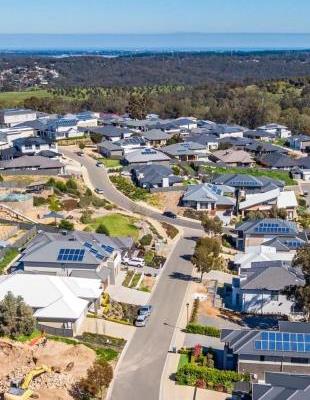Generating over 80% of global GDP, cities have always been the engines of economic growth and innovation. As the world becomes increasingly urbanized, they are also at the forefront of some of the biggest challenges we face today. From climate change and population growth to ageing infrastructure and resource depletion – our natural and built environments are being tested to their limits. Urban energy systems can play a critical role in supporting resilience and prosperity, enabling cities to adapt to changing circumstances and thrive in the face of uncertainty.
Urgent action is needed on all fronts to ensure cities of the future continue meeting the needs of their communities, considering affordability, livability and inclusivity. Clean and renewable energy sources, and the development of smarter and sustainable urban energy systems can help meet the increasing demand for energy. But with cities contributing to 75% of global carbon emissions, are there significant enough steps we can take before it’s too late?


Navigating energy challenges in a rapidly changing world
The energy crisis in 2022 highlighted the impact on European citizens, most notably record-high energy costs. In the US, nearly half of homeowners are concerned about power outages stemming from weather events and cyberattacks on the power grid1.
And, in the UK around 13% of households are ‘fuel poor’2, meaning increased energy costs would push them into poverty if used at adequate levels.
The challenges of energy transition are both complex and multifaceted, and they impact everyone. They also pose the greatest opportunities to change the course of our collective futures.
Climate Change and Decarbonization
With climate change already causing rising sea levels, extreme weather patterns, and other destructive phenomena, cities are under pressure to take action, setting ambitious targets to reduce their carbon footprint. Energy transition is key to achieving these targets, with many cities already shifting to lower carbon or renewable energy sources like solar, wind, and hydropower. In Amsterdam, Arcadis has worked with the municipality to develop an Energy Transition Strategy that aims to achieve a carbon-neutral city by 2040. Measures include increasing the share of renewable energy, improving energy efficiency, and promoting sustainable transport.
Rapid Urbanization
As cities attract more people, so does the need for electricity to power growing populations and infrastructure. Various sectors supplying these services are moving towards electrification, increasing demand, putting pressure on our grids. With renewables being the cheapest form of power today3, it’s attractive for cities to invest in clean energy sources. But this also means more supply or even oversupply with grid capacity not expanding at pace. Infrastructure and space are key factors to support an effective transition. Cities must explore a range of options that best suit their unique strengths – from renewable energy and circularity of infrastructure, to repurposing industrial waste for energy supply.
Digitalization and Decentralization
New digital technologies are changing the way we produce, distribute, and consume energy. Smart grids, energy storage systems, and other innovations are making it possible to generate and manage energy more efficiently. Decentralization, which allows energy to be produced and consumed locally, is another key trend in the energy transition. In the Netherlands, for example, almost 40% of the electricity supply is generated by decentralized energy systems.
Public Awareness and Action
Citizens and organizations are becoming more aware of the need for sustainable energy, and they are taking action to promote change. Public opinion can shape policy and investment decisions, and cities that embrace sustainable energy will be better positioned to attract residents and businesses.
Government Policies and Regulations
Policies and regulations like the European Green Deal, the Biden-Harris Administration’s $11 billion in grants and the ‘Powering Up Britain’ Energy Security Plan can incentivize or mandate the use of sustainable energy sources, which can drive innovation and investment in the energy sector. Governments can also provide funding for research and development of new technologies, in partnership with the private sector.


A smarter and more efficient ideal urban system would have electricity at its core, utilizing aqua thermal and backup electricity connecting all sectors. We must cut red tape, specifically bureaucratic obstacles, addressing congestion and permit issues, and fostering innovation through net metering and incentives.
From Vision to Reality: Towards smart, sustainable urban energy systems
There are many opportunities in the energy transition. The rise of sustainable finance, for example, presents a major opportunity to fund energy transitions, but the effects are concentrated in advanced economies. How can we approach this so that everyone is brought along and benefits from the journey?
We need to adopt a holistic approach to urban energy systems. One that recognizes the interconnected nature of the climate challenges, energy transition, societal welfare and spatial limitations. By taking a comprehensive ‘systems thinking’ approach to energy planning – bringing all stakeholders including local governments, the private sector, academic institutions, the energy and resources sector and citizens together – we can drive change across the entire urban energy ecosystem, from buildings and transport to water and waste management.
So, what needs to change today?

MINUTES
You have not accepted cookies yet
1. A holistic, integrated approach: Stacking mobility, energy, infrastructure
Policymakers and governments facilitate progress with energy transition, but they shouldn't bear sole responsibility. Collaboration among municipalities, infrastructure providers, corporates and logistics companies is essential.
-
Read more
Achieving more sustainable transport options in cities for example requires a joint approach from the mobility, energy, and other public sectors. Sector coupling – creating better interconnected ways of collaborating between energy consuming and influencing sectors – is key. The RAI Convention Center’s sustainability vision and Masterplan for 2030 is a one such example of the journey to carbon neutrality, eventually leading to a self-sufficient energy system that can benefit citizens, neighborhood shops and the city’s mobility.
2. Bold leadership and courage: removing the red tape and showstoppers
Insufficient support and commitments can impede the adoption of critical new technologies for advancing the energy transition. Taking action and working together towards common goals can drive significant progress.
-
Read more
Collaborative policymaking can serve as a model for effective decision-making. Coupled with streamlined regulations and processes, as well as incentives such as net metering, we can create a fertile environment to progress this agenda.
Bold leadership, political courage and varied perspectives are vital for the systemic leap needed. Local politicians and city officials can make a difference by looking beyond their own mandate and connecting policies and demonstrating leadership during moments of crisis. In the UK, the City of Wolverhampton Council partnered with Royal Wolverhampton NHS Trust to build a solar farm to supply energy directly to their New Cross Hospital, in line with the city’s commitment to reaching net zero carbon emissions by 2041. This will make it the first hospital in England to be fully powered by renewable energy, with savings reinvested into frontline healthcare.

Political alignment and will are crucial to implement Local Law 97 in New York, which aims to push owners to make buildings more energy efficient. Tax credits availability, fines used as deterrents and extra grids being put in place can smooth the transition to energy efficiency. It is critical to not waste a good crisis and take advantage of opportunities to make positive changes.
3. Powering the right investments: renewable energy, energy efficiency and resilient infrastructure
Energy investment is set to pick up, but almost half of the increase in capital spending is linked to higher costs4. Cities need to invest in resilient infrastructure and measures that can withstand the escalating impacts of climate change. A large proportion of emissions in urban areas come from buildings.
-
Read more
Retrofitting existing buildings to improve energy efficiency and reduce emissions is a critical step towards achieving a net-zero carbon future. This can be achieved by incentivizing building owners to invest in energy-efficient measures and providing financial support where necessary.
Adopting circular economy principles can help reduce waste, increase resource efficiency, and minimize environmental impacts. A great example is the BENEFRICHES tool created by Arcadis, ADEME, the French agency for ecological transition, and Efficacity, to help communities and land development stakeholders make the right decisions on urban planning and take a more sustainable, circular approach to their projects.


4. Community engagement and behavioral change: Prioritizing equity and social inclusion
Efforts to drive energy transition should begin by encouraging citizens to save energy through behavioral change, focusing on small, incremental steps with immediate benefits. Implementing solutions in large buildings and social housing, like utilizing residual heat like the case in Antwerp for district heating networks, can kick-start progress.
-
Read more
It's crucial to ensure a just transition. Engaging citizens creatively and forming a coalition of the willing can generate bottom-up support. Communication and good government-citizen relations foster interest and involvement. Arcadis’ Noise App for example, can help local residents feel heard by wind turbine developers, local and provincial authorities, and operators. It provides access to data around shadow flicker and noise pollution, giving them the tools to easily report any disruption, in turn, improving buy in.
5. Leveraging public-private partnerships for innovative solutions
Collaborative sustainability initiatives thrive when focused on specific areas or neighborhoods, helping test and showcase new, innovative solutions.
-
Read more
Public-private partnerships (PPPs) bring stakeholders together and combine capabilities with investments, making them attractive by providing ‘living laboratories’ or pilot programs which require relatively less initial funding, helping get innovations and new solutions off the ground quicker. Connecting sectors like industry and mobility for example, creates an integrated system, optimizing resource usage.

Urban Resilience





